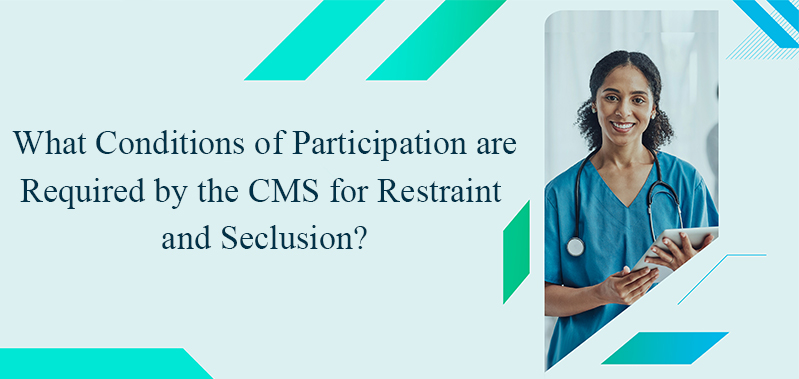
What Conditions of Participation are Required by the CMS for Restraint and Seclusion
Hospitals are required to comply with the Federal requirements set forth in the Medicare Conditions of Participation (CoP) in order to receive Medicare/Medicaid payment. The goal of a hospital survey is to determine if the hospital complies with the CoP set forth in 42 CFR Part 482. Certification of hospital compliance with the CMS Hospital Restraint and Seclusion of CoP is accomplished through observations, interviews, and document/record reviews. The survey process focuses on a hospital's performance of patient-focused and organizational functions and processes. The hospital survey is the means used to assess compliance with federal health, safety, and quality standards that will ensure that the beneficiary receives safe, quality care and services.
All patients have the right to be free from physical or mental abuse and corporal punishment. All patients have the right to be free from restraint or seclusion, of any form, imposed as a means of coercion, discipline, convenience, or retaliation by staff. Restraint or seclusion may only be imposed to ensure the immediate physical safety of the patient, a staff member, or others and must be discontinued at the earliest possible time.
CMS Hospital Restraint and Seclusion is any manual method, physical or mechanical device, material, or equipment that immobilizes or reduces the ability of a patient to move their arms, legs, or head freely. A drug or medication when is used as a restriction to manage the patient's freedom of movement and is not a standard treatment or dosage for the patient's condition.
A restraint does NOT include devices, such as orthopedically prescribed devices, surgical dressings or bandages, protective helmets, or other methods that involve the physical holding of a patient for the purpose of conducting routine physical exams or tests or to protect the patient from falling out of bed, or to permit the patient to participate in activities with the risk of physical harm (not a physical escort). Seclusion is the involuntary confinement of a patient alone in a room or area from which the patient is physically prevented from leaving. Seclusion may only be used for the management of violent or self-destructive behaviour.
The rules say that if a patient needs to be restrained or put in seclusion, they have to be seen by a doctor, nurse, or physician assistant within an hour. This person has to be trained to deal with the situation properly. They have to see the patient in person, not over the phone or through video calls. Even if the patient calms down before the doctor arrives, the doctor still needs to see them within an hour. This is because using restraint or seclusion means there's a serious medical or psychological issue that needs to be checked quickly. The evaluation helps decide if the patient still needs the restraint, what caused their behaviour, and if the intervention was the right thing to do. If a trained nurse or physician assistant does the evaluation, they have to talk to the main doctor afterwards to make sure everyone is on the same page about the patient's care.
In the realm of patient care, the directives for restraint or seclusion are governed by a series of meticulous protocols aimed at ensuring the safety and well-being of residents. These directives, as stipulated by Federal regulations at 42 CFR 441.151, require that such measures be ordered only by a qualified physician or licensed practitioner trained in emergency safety interventions. Moreover, the order for restraint or seclusion must align with the principle of least restriction, tailored to address the emergency safety situation following consultation with staff effectively.
If there's an emergency, a resident can be restrained for up to 30 minutes without needing permission first. But right after that, the doctor has to be called. If the doctor says no to the restraint after being called, it has to be taken off. Before a doctor checks a resident, they can be restrained if the doctor says it's okay. However, this restraint can only last until the doctor checks them or for 2 hours, whichever is shorter.
Thorough CMS Hospital Restraint and Seclusion documentation is imperative, encompassing the order details, intervention timeline, assessment outcomes, staff involvement, and the precipitating emergency. The facility maintains a meticulous record of each emergency safety situation and its outcomes. Finally, the responsible physician or licensed practitioner must promptly endorse the restraint or seclusion order in the resident's record, solidifying the commitment to adherence and accountability in patient care.




